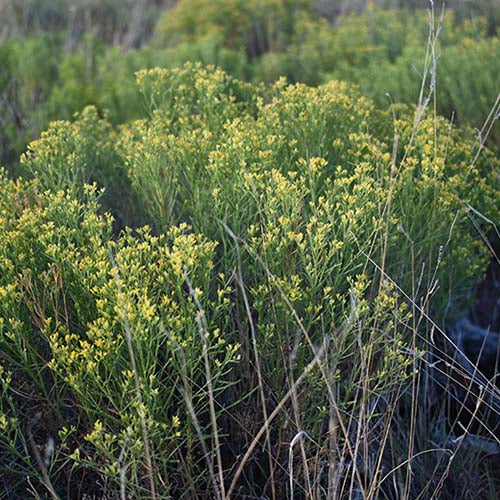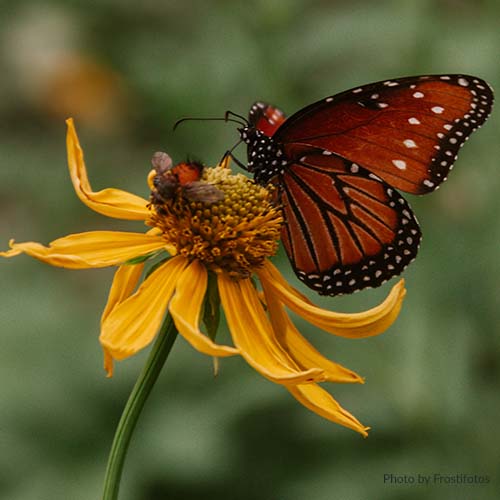
Broom Snakeweed (snakeweed) grows on dry plains and slopes throughout arid deserts in altitudes ranging from 3,000 to 9,000 feet elevation. This native perennial, warm-season plant grows up to two feet tall and is a semi-shrub with a woody stalk. It has very narrow leaves and small, inconspicuous yellow flowers (which bloom from August to October). [i] Scientific name synonyms include: Xanthocephalum sarothrae (Pursh) and Shinners Solidago sarothrae Pursh. There are at least 12 different species of snakeweed, all from the Asteraceae (Sunflower) family.[ii]
Snakeweed essential oil is not common and not offered by many essential oil suppliers or distillers. The aroma is fresh, herbaceous and slightly woody. The essential oil comes from the leaves of the plant through steam or hydro-distillation. It is mainly wild harvested from plants in the southwest.
It is believed by some that for plant dangers that exist in an environment, there also exists a plant remedy for it. Native Americans are known to have used this plant for a variety of medicinal purposes including as an herbal steam for respiratory ailments; a decoction to treat colds and coughs; and in a poultice for snake and insect bites. Today, herbalists continue to use it as an herbal remedy through tinctures, teas and salves. Mr. Kane states, “Snakeweed is mainly used externally to reduce joint soreness, particularly from rheumatoid arthritis. Being broadly anti-inflammatory and especially calming to muscular–skeletal pain, it will be found particularly helpful to sufferers of ‘fibromyalgia’.”[iii]
Similar to the herbal characteristics, snakeweed essential oil has the following therapeutic qualities: anti-inflammatory, anti-rheumatic, analgesic, anti-infectious, anti-microbial and decongestant. Some potential risks with this essential oil are: possible abortifacient, not water soluble and is a potential skin irritant and allergen when oxidized.[iv] In addition, there are many who have histamine reactions to this plant which can be quite severe. It is always best to ask your client if they have any allergies. Remember that there are several species of this plant, which could make a difference to that allergy sufferer.
The energetics of this essential oil, as indicated by the plant itself are survival, support, protective, purifying, and grounding with the large tap root able to sustain it during long periods of drought. This essential oil is great for use on the Base Chakra (grounding) and the Solar Plexus Chakra (protector and purifier).[v]
"This article was originally published in the November 2019 issue of AromaCulture Magazine (www.aromaculture.com) and has been adapted for use here with permission from the publisher."
To read the full article, click here.
Comments will be approved before showing up.


We all have heard that it is important to strike work-life balance. That working long hours can be harmful to employees and devastating to families. But how do you do IT!
Is it truly necessary that in order to be successful, one has to work long hours? How does one resist working all of those long hours?
